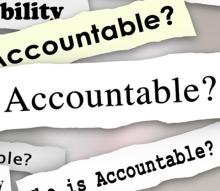Post Written By: Sara Hunter, Wellness Advisor, OITE
As humans, our brains like familiarity. It allows us to create patterns and connections that provide a structure by which we can formulate decisions and make sense of the world. So, when uncertainty arises, as it always will, it’s no surprise that we can be thrown off, a bit unsettled and even overwhelmed. Our brains are trying desperately to pair the incoming information from our environment with our collection of memories to find any familiar link between the current stimulus and our past experiences. But because of this new, unknown stressor we are coming up against, our brain’s pattern-making process sometimes can lead to oversimplification or faulty thinking, such as unchecked biases or cognitive distortions. Other times, it simply signals a fear response – an alarm against the unknown – and activates our sympathetic nervous system, triggering a release of cortisol and adrenaline and initiating what’s commonly known as our flight, fight, or freeze modes.
Understanding our brain’s tendencies in response to uncertainty is an important part of interrupting old patterns and building in new, adaptive responses as we navigate all the unknowns we face today. Outlined below are three common, habitual responses to uncertainty, followed by some alternate ways to train our brain and body to move through it more effectively.
Common Response: Catastrophizing – Our brain tries to fill in the unknown gaps of stories, often by thinking of worst-case scenarios, in effort to get ahead of the fear you may feel in response to uncertainty.
What to Do Instead:
- Regulate your body, first and foremost, by bringing it back to the present moment. This is important because it signals your immediate safety which is necessary for the higher order functioning parts of your brain, like the pre-frontal cortex, to come back “online” and do what it does best -- plan, problem solve, think creatively. Some simple ways to regulate your body are through:
- Breathing: try breathing in as you count to four, hold count to seven, and exhale for eight. Repeat at least three times to help activate the parasympathetic nervous system.
- Grounding the body in the present by noticing five things you see, four things you hear, three things you smell, two things you can touch, and one thing you can taste. Repeat if necessary or focus on one sense if that’s simpler.
- Call out your catastrophic thoughts by NAMING them for what they are. This allows us to move forward in productive ways as opposed to getting lost in the directions these distortions can take us. Thank your brain for trying to protect you, but let it know that you got this. One way to distance yourself from these thoughts is to imagine them being said to you in a funny or at a painfully slow pace. This allows you to relate to them as just thoughts and not necessary reality.
Common Response: Worrying – Worry is a habitual mental response to stimuli in our environment that signals discomfort or stress. It gives the allusion that we’re doing something about a problem when it’s only providing a false sense of relief from the fear we may feel around uncertainty. This immediate relief creates a reward system in our brain, reinforcing an unhelpful worry habit loop that goes something like this: feel fearful or anxious about the uncertainty à worry about the uncertainty to avoid the underlying feeling of fear (allusion that you’re “doing” something) à experience temporary relief from feeling the fear/anxiety à the feeling of anxiety increase next time we notice, think about, experience uncertainty.
What to Do Instead:
- Replace your worry response to uncomfortable feelings, like fear and anxiety, by regulating your emotions using RAINN:
- R- Recognize what emotion(s) is coming for you - put a name to it.
- A – Accept what is coming up for you in the moment. Often our suffering/stress is extended because of the judgment we have in response to our initial emotional reaction. By accepting what we’re feeling, we can figure out an effective way to move through it as opposed to avoid it or berate ourselves for having it in the first place.
- I – Investigate why this emotion is showing up in the moment. Ask yourself, what else may be underneath it? What is going on around you that may be contributing to how you’re feeling?
- N – Non-identify with the emotion. This is simply a reminder that what you’re feeling in the moment is a piece of data to consider, not the whole story so you don’t have to be consumed by it.
- N – Now what? Ask yourself this question to figure out how you want to move forward, given the information above. Approach this from a place of curiosity and compassion.
Commons Response: Numbing or Avoiding – Our current culture of instant gratification, abundance, and easy access to comfort and the things we crave makes this response easier than ever before. And as a result, this is often one of the hardest to shift away from, but with practice and intention it’s possible. As you deliberately move away from your normal numbing behaviors and learn to act opposite to your urge to escape discomfort or let go of your resistance around feeling the anxiety triggered by uncertainty, you’ll see that it becomes easier to manage over time. Numbing only reinforces a false belief that you must escape the discomfort quickly because you can’t handle it. But trust me - with practice, you can!
What to Do Instead:
- Practice Mindfulness - Ride the wave of the discomfort you feel in response to uncertainty by paying attention in the present moment, on purpose, and without judgment. You can do this by simply noting what you are experiencing in your body, naming what emotions show up and what thoughts follow. When you notice yourself evaluating physical or psychological feelings as good or bad or scary (or anything else), that’s okay. Simply bring yourself back to the present moment by observing your thoughts and emotions as if they are an object outside of you, like a cloud passing in the sky or train moving through town. Do the same in your body by describing the sensations you feel – tension, heaviness, ease – with as much objective detail as possible.
Interrupting our old, patterned responses takes practice and patience, but with deliberate intention you can begin to rewire your brain’s ability to handle uncertainty more effectively. Please don’t hesitate to reach out to the OITE Wellness Team at OITE-Wellness@nih.gov of you need support in the process. We are here to help.




